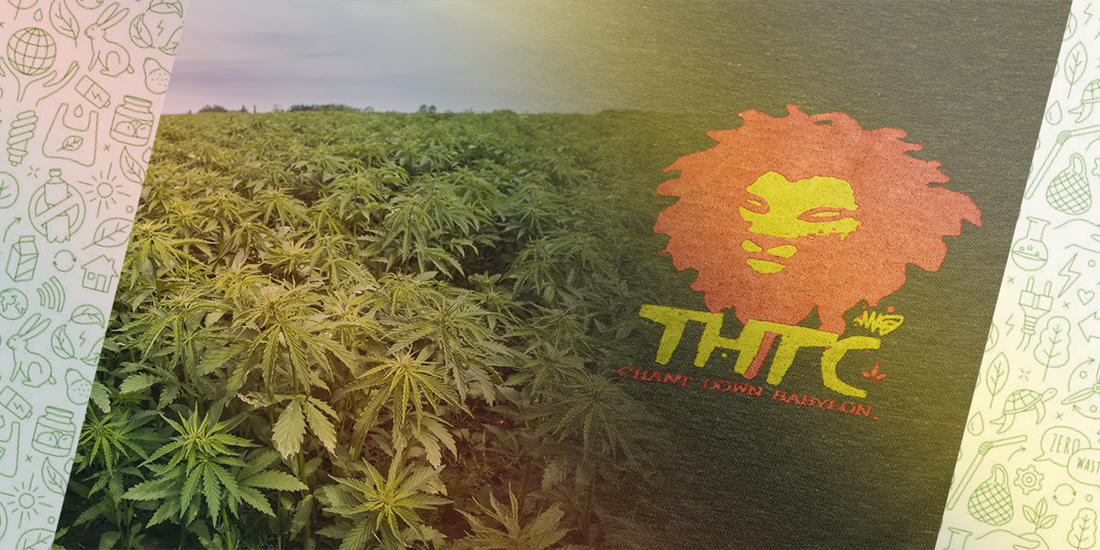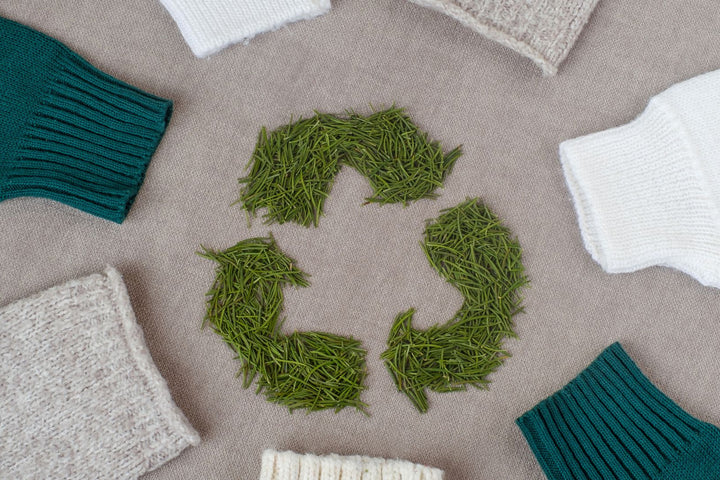Turning hemp into fibre is one of the oldest agricultural and mechanical processes humans mastered in their cultural and physical evolution. We’ve noted in past blogs that humanity’s utility of hemp cordage significantly advanced our technological progress. It allowed us to create larger boats, fishing nets, and invent agricultural equipment. But what makes hemp so well-suited to making textiles - mainly t-shirts and hoodies? And why would a piece of clothing made from it be worth its weight in gold?
Rob Clark’s Evolution and Ethnobotany of Cannabis will again be our guide and source material for much of this blog. Free PDFs are available widely on the internet - but the book is a fantastic presence on anyone’s coffee table. We’ll also be drawing from our personal experience with our hemp production partners in China and Fashion Revolution’s website.
This edition reviews the steps of hemp-for-fibre planting, harvesting and production - how the fibre is then produced - and why hemp clothing is the best purchase you could make.

Introduction to Hemp
For those new to the THTC blog, there are more and more of you every day! - let’s get a few basic principles of hemp sorted before we move on:
- Hemp is usually known as industrial hemp. It is genetically identical to the strains of Cannabis Sativa used medicinally or recreationally.
- Hemp is a multipurpose crop - it can be used for fibre, food, medicine and composite materials.
- While industrial hemp is identified as having low THC, no genetic markers exist to distinguish between low and high THC strains until flowering and maturity.
- Hemp cordage and impressions of it have been discovered in archaeological sites dating back more than 20,000 years. It is one of the oldest utilised natural plants in human history.
- It is strong and durable due to its naturally occurring long fibres.
- It requires no toxic pesticides or fertilisers to farm.
- Hemp grown for fibre reaches maturity between 80-120 days and height 2-4 metres.
The cannabis plant has a long history with humans. In the entirety of human existence, the prohibition and control of cannabis sativa is a very recent phenomenon. Its roots are deeply embedded in racism and social control. Hemp has among the most diverse in its possible end-products when ranked against other multipurpose crops such as sugarcane, grasses or cereals.

Growing Hemp for Fibre
Relative to other fibre crops - hemp grows extremely fast, maturing within 120 days. The only other comparable crop is conventional cotton, which takes around 160 to fully mature. However, cotton requires considerably more water and a lot of chemical treatment during growth to deter pests. Hemp plants only need 10-13 inches of water to grow within three to four months - a third much less water than cotton requires.

Unlike varieties of cannabis grown for flowers, hemp varieties are grown for length and height. Plants are densely packed into fields with up to 150 plants per square metre of soil. Given the plant’s life cycle, they can be seeded all year round - depending on the climate.
The plant is harvested during the mid-flowering stage when males start shaking off their pollen. Unlike cannabis, hemp is grown with males and females together, as pollination also leads to seed creation.
Side Note: There is currently a conflict between open-air cannabis growers and hemp farms in America, which has resulted in the ban of hemp cultivation in Humboldt County, California. Basically, cannabis growers and hemp farmers come into direct conflict.

Hemp stalks are usually harvested by tractor, cutting 4-5 feet above the ground, ensuring that hemp fibre and seeds can be pulled in. The latter goes towards making foods, protein cake for further processing, oils and fuel.
Processing Hemp for Fibre
Next, we must remove the valuable stuff - the bast fibres - from everything else. For this, we need retting - a process that has not effectively changed in thousands of years. Retting is a biological process where hemp undergoes a controlled ‘rot’ - bacterial processes eat up the pectin and chemical bonds which keep the hemp fibre packed together. This separates the long fibres from everything else.




At this point, the fibres undergo hackling - combing the fibre repeatedly, removing short and medium-length fibres from the stalk. Longer fibres are cut down to more manageable sizes and thicknesses. Some fibres then undergo ‘wet spinning’ (being passed through hot water), which softens any pectin left on the fibre, and makes it easier to work with.
Retting and hackling have been updated to incorporate automation and modern biochemistry - however, the basic principles remain the same.

Weaving Fabrics
The fibres are now ready for weaving and turning into fabrics. Depending on the fibre width, they might not be able to be used with most industrial machines designed for more mainstream fibres such as conventional cotton and synthetics. As we’ve mentioned, this is due to historical investment designed to undermine hemp and maximise profits in a field without control over its development. Industrial hemp fabric is currently produced with specialised equipment.
China still leads the way in hemp processing. They weave hemp with organic cotton and work with producers in the Middle East to create hemp-composite fibres such as Hemp-Silk, Hemp-Organic Cotton and Hemp-Jute. Eastern Europe used to have fantastic hemp production capacity. However, since the fall of the USSR and subsequent programs by nationalist governments to burn and destroy anything to do with the world’s most successful worker-led revolution, hemp agriculture has taken somewhat of a backward step in countries like Ukraine.

Hemp’s hydrophilic nature means it takes dyes really well - an excellent explanation for the vast number of hemp technicolour shirts worn by crusties in the 60s and 70s. As we’ve also mentioned previously, hemp’s strong fibre structure means that over time, it is just softer and also has a naturally high lustre. Specific mechanical processes - i.e. sustained fibre brushing - can make hemp fabric shine.

Hemp fibres shield from UV light, protecting skin from sun damage. The fibres are mostly hollow. This means that it is an effective thermoregulator relative to other fibres - it keeps you cool when it’s hot, hot when it’s cold - and ensures that it stays breathable. Hypoallergenic properties are good news for those with sensitive skin and immune systems - and hemp’s antibacterial properties mean that if you sweat, your material is actively fighting against those nasty bacteria that create BO and mildew. Although this isn’t an excuse for you to not wash.
Hemp, at the end of its life
Given that the fashion sector is responsible for over 100 million tonnes of waste in landfills every year, it’s pretty crucial for people working in hemp that we’re not making the same mistakes.
Organic hemp is a natural fibre. As long as it’s not mixed with any plastics, for example, rPET or plastic-based inks, the fibres can be easily reclaimed and recycled. It also means that the fabric is entirely compostable. THTC has long aspired to have a circular economy. Our organic cotton partners, TeeMill, collect our old and dead t-shirts and respin them with new fabrics. They can also do this with our hemp t-shirts as they’re free of materials that would otherwise cause problems in the recycling process.
Social Benefits of Hemp Fabric
Hemp agriculture requires none of the herbicides, pesticides, fungicides, or insecticides to provide high yields for fibre. Hemp is also an effective phytoremediator, pulling out many substances - manufactured or otherwise - from the soil. As such, agricultural pollution in hemp-growing areas tends to be much lower than in equivalent crop areas. In America, agricultural pollution has been linked to generations of congenital disabilities - any crop and industry that reduces the reliance on such chemicals is something to be adopted.
Despite advances in automation, hemp is still labour intensive and requires a lot of manual input to be effectively utilised. While talk of robots replacing humans is often wheeled out to scare people into accepting their low-paid jobs, you can’t automate high-quality craftsmanship. The hemp industry keeps millions of people in good, clean work throughout China and Korea. Hemp weaving is the backbone of many rural communities. Modern capitalism tells us we must do away with manual labour because it makes things too expensive. To that, we say that the cost of making cheap crap is far too high.
In addition, the hemp processing districts of Shandong, China, have excellent benefits for workers. First, their pay is well above the living wage for workers in the region, allowing a significant degree of homeownership among hemp workers. Workers also receive many state and community benefits. These include paid maternity leave, homes and household property that the workers will own at retirement, child daycare, comprehensive healthcare, schooling up to six years old, and subsidised university education.
Final Words
It’s not just the plant that makes eco-friendly hemp textiles great - it’s everything about the world that has grown around having a plant-based planned economy. Profits are shared back to the community through state and cooperative ownership; it’s an industry based on the craftsmanship that creates long-lasting products.
Hemp’s renaissance and the revitalised 2018 US Farm Bill have seen an uptick in the consumption and creation of hemp products - and a boom in the rural processing and garment manufacturing districts of South East Asia, where hemp’s culture was preserved. The fashion industry is entrenched in profoundly wasteful and abusive practices - the adoption of hemp is among the many ways to make genuinely sustainable clothing.



